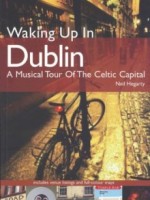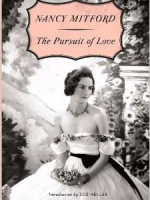(Published by Virgin)
 |
One of two books written on this subject last year, David Cavanagh’s version of the madness and mayhem that was Creation Records is an utterly fascinating read. Although denounced by Creation lynchpin Alan McGee as “the accountants tale”, this is much more than a mere bean-counting exercise; it gives a far bigger picture than Paulo Hewitt’s ‘Alan McGee and the story of Creation Records’.
Exhaustively researched and meticulously documented, Cavanagh’s book takes a comprehensive and thoroughly fascinating look at the English music scene from the introduction of punk in 1976 through to the dramatic implosion of the post-Oasis company in 1999. Although focusing on Creation, its great strength lies in the way it puts the label and its bands very firmly in the context of the music industry of the time. Creation Records was not the first independent record label to emerge during the golden age of British indie music but it was the most durable.
In 1980 Alan McGee, a 19 year-old Glaswegian, moved to London with his band, The Laughing Apple. After the band’s disintegration, McGee started a fanzine and club eventually moving into the world of record label ownership with fellow music fans Joe Foster and Dick Green in 1983. At a time when rock music seemed to be dying a lingering death, Creation (first named Creation Artifact) was intended to be the “premier indie [label] for new guitar music.”
Although the first release – a single from The Legend! called ’73 In 83′ – was described as “totally worthless” it was the beginning of a label that was to release the Jesus and Mary Chain’s first single little more than twelve months later. The section of the book that deals with the early incarnations of the Mary Chain is where the story really kicks off, with dysfunctional battling brothers Jim and William Reid creating music so confrontational and incendiary that several of their early gigs ended in audience rioting.
With the Mary Chain going down the majors route by signing to Warners subsidiary Blanco y Negro, Felt, The House of Love and Primal Scream become Creation’s great white hopes. Felt never really made it into the mainstream despite indie chart success with single ‘Primitive Painters’. The House of Love left Creation for Fontana on the verge of their breakthrough and Primal Scream took until 1991 to re-invent themselves as the kings of acid house indie dance on their third album, Screamadelica. In the meantime, ridiculous amounts of drugs were making inroads into the company, any kind of logical thinking was out and McGee was getting swept up into the new clubbing world of the Balearic Beat. Amidst all this, he still found time to sign My Bloody Valentine – although he would later have ample opportunity to regret this as they almost dragged the entire label into the financial blackhole that was their masterpiece, ‘Loveless’.
Eventually forced to sack My Bloody Valentine, McGee replaced them with other members of the shoegazing fraternity including Ride and the Boo Radleys. Meanwhile, changes were afoot in the record industry. The collapse of Rough Trade Distribution in 1991 meant that the smaller independent labels had lost the means of distributing their records and this left the market wide open for the rise of majors in the indie market. Strapped for cash in the wake of the MBV fiasco, McGee was forced to sell 49% of Creation to Sony which ensured that the company – governed, as McGee admitted, by a “shoebox-under-the-bed mentality” – was at least temporarily solvent.
McGee, by this stage an obnoxious coke addict who also had an interest in speed, alcohol and practically any substance that could get him high, was about to hit the wall. He spent almost two years recovering from a breakdown, leaving an air of uncertainty in Creation despite a string of hits from the Boo Radleys, Primal Scream and, of course, Oasis.
The advent of Oasis, and the band’s spectacular success, virtually turned Creation into a one band label. The Gallagher brothers, like William and Jim Reid, were constantly at each other’s throats yet, in the early days at least, were more entertaining than destructive. Cavanagh gives an example of an exchange between Noel and Liam at a press conference early in their career: ” Liam: ‘You’ve got to progress. But it doesn’t meat to say you’ve got to go forward.’ Noel: ‘Eh?’ Liam: ‘You can progress sideways. Or backwards. I’m right. Tell me I’m not.’ Noel: ‘ Progression is going forwards. Going backwards is regression. Going sideways is just gression.’ ” And then they released Britain’s fastest selling debut album, ever – ‘Definitely Maybe’.
The culture change that Oasis mania and McGee’s breakdown brought about in Creation was the beginning of the end for the company – and it’s also where Cavanagh’s narrative runs out of steam. Bound up in politics, backslapping and Kevin Rowland’s cross-dressing promotion of his album of cover songs (it eventually sold a total of 700 copies, bringing Creation full circle back to the days of the Legend!) ‘The Creation Records Story’ winds down along with its subject. McGee announced his departure in November 1999 and Creation was over by Christmas.
Despite the weak ending, ‘The Creation Records Story’ is practically unputdownable. Jam-packed with facts, figures and anecdotes, it captures a zeitgeist embodied in the confident and impulsive Alan McGee, without ignoring the employees, supporters – and critics – that made Creation both vital and notorious. However it must be noted that the lack of a discography is an unforgivable oversight and the index could be more comprehensive. Criticisms apart, this is an indispensable tome for anyone with even a vague interest in the music industry and, at 785 pages, it’s a weighty one too. ![]()



